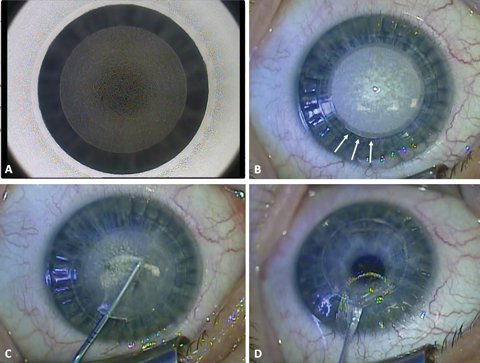With the growing popularity of SMILE eye surgery (Small Incision Lenticule Extraction), many first-time patients ask the essential question: Is SMILE eye surgery safe? Backed by over a decade of clinical use and peer-reviewed research, SMILE has proven to be a safe, effective, and reliable vision correction procedure for patients with myopia and astigmatism.
In this article, we dive into the latest scientific research, safety profile, and clinical outcomes to help you make an informed decision about SMILE.
What Makes SMILE Eye Surgery Safe?
SMILE is considered one of the safest forms of laser vision correction. Unlike LASIK, it does not require the creation of a corneal flap. Instead, it uses a femtosecond laser to remove a thin piece of tissue (called a lenticule) through a tiny incision, which greatly reduces trauma to the eye.
Key safety advantages of SMILE include:
- No corneal flap = no flap-related complications
- Minimally invasive incision (~2–4 mm)
- Lower risk of dry eye due to reduced nerve disruption
- Quick healing and tissue recovery
- Preserved corneal biomechanics (structure and strength)
Clinical Evidence Supporting SMILE’s Safety
1. FDA Approval (U.S.)
In 2016, the U.S. Food and Drug Administration (FDA) approved SMILE for the correction of myopia. In 2018, the approval was expanded to include astigmatism. FDA trials demonstrated:
- High safety margins
- Over 99% of patients achieved 20/40 vision or better
- Extremely low complication rates
2. Peer-Reviewed Studies and Meta-Analyses
Recent research highlights SMILE’s excellent safety profile:
✔ Safety and Efficacy of SMILE vs LASIK (2020, Journal of Cataract & Refractive Surgery)
- Compared over 3,000 patients.
- SMILE showed equal or better safety and fewer complications than LASIK.
- Reported 0% flap-related issues in SMILE vs. small but measurable risks in LASIK.
✔ Dry Eye Comparison Study (2019, BMC Ophthalmology)
- Found significantly fewer dry eye symptoms in SMILE patients at 1 and 3 months post-surgery.
- Attributed to the smaller incision and preservation of corneal nerves.
✔ Long-Term Outcomes Study (2022, American Journal of Ophthalmology)
- Tracked patients over 5 years.
- 95%+ stability in visual acuity, minimal regression, no long-term complications.
3. Surgeon and Patient Satisfaction
In international surveys of refractive surgeons:
- Over 90% of surgeons consider SMILE a highly safe and stable procedure.
- Patients report high satisfaction rates, largely due to fast recovery, minimal discomfort, and long-lasting results.
Common Side Effects and Their Management
While rare, SMILE eye surgery can have temporary side effects:
| Side Effect | Frequency | Notes |
|---|---|---|
| Dry eyes | Low | Less common than LASIK; treatable with drops |
| Glare or halos at night | Mild/temporary | Usually resolve in weeks |
| Undercorrection/Enhancement | Very rare | Enhancement options available if needed |
| Infection or inflammation | Extremely rare | Preventable with proper post-op care |
Is SMILE Eye Surgery Safer Than LASIK?
Both LASIK and SMILE are very safe when performed by experienced surgeons. However, SMILE may be safer in specific aspects:
| Feature | SMILE | LASIK |
|---|---|---|
| Corneal Flap | ❌ None | ✅ Created |
| Dry Eye Risk | Lower | Higher |
| Biomechanical Strength | Better preserved | More compromised |
| Complication Rate | Very low | Low |
| Ideal For | Active lifestyles, thin corneas | General population |
Who Should NOT Have SMILE?
While safe for most, SMILE may not be suitable for individuals with:
- Unstable vision or rapidly changing prescriptions
- Very high degrees of hyperopia (farsightedness)
- Thin or irregular corneas
- Certain eye diseases (e.g., keratoconus, glaucoma)
A detailed consultation and diagnostic workup will ensure only suitable candidates undergo the procedure.
Conclusion: Is SMILE Safe?
Yes—SMILE eye surgery is safe, clinically proven, and FDA-approved.
Decades of data show that SMILE offers:
✅ Predictable outcomes
✅ High patient satisfaction
✅ Minimal risks
✅ Long-term visual stability
If you’re a candidate, SMILE can be an excellent alternative to LASIK—especially if you prioritize safety, a quick recovery, and fewer side effects like dry eyes.




